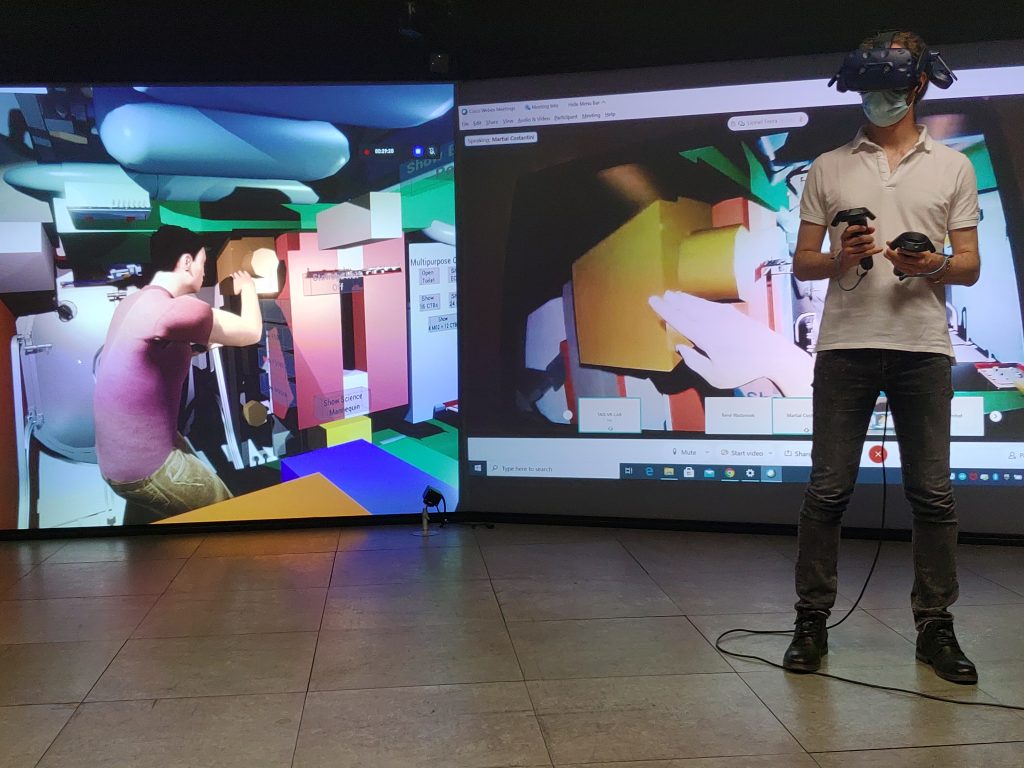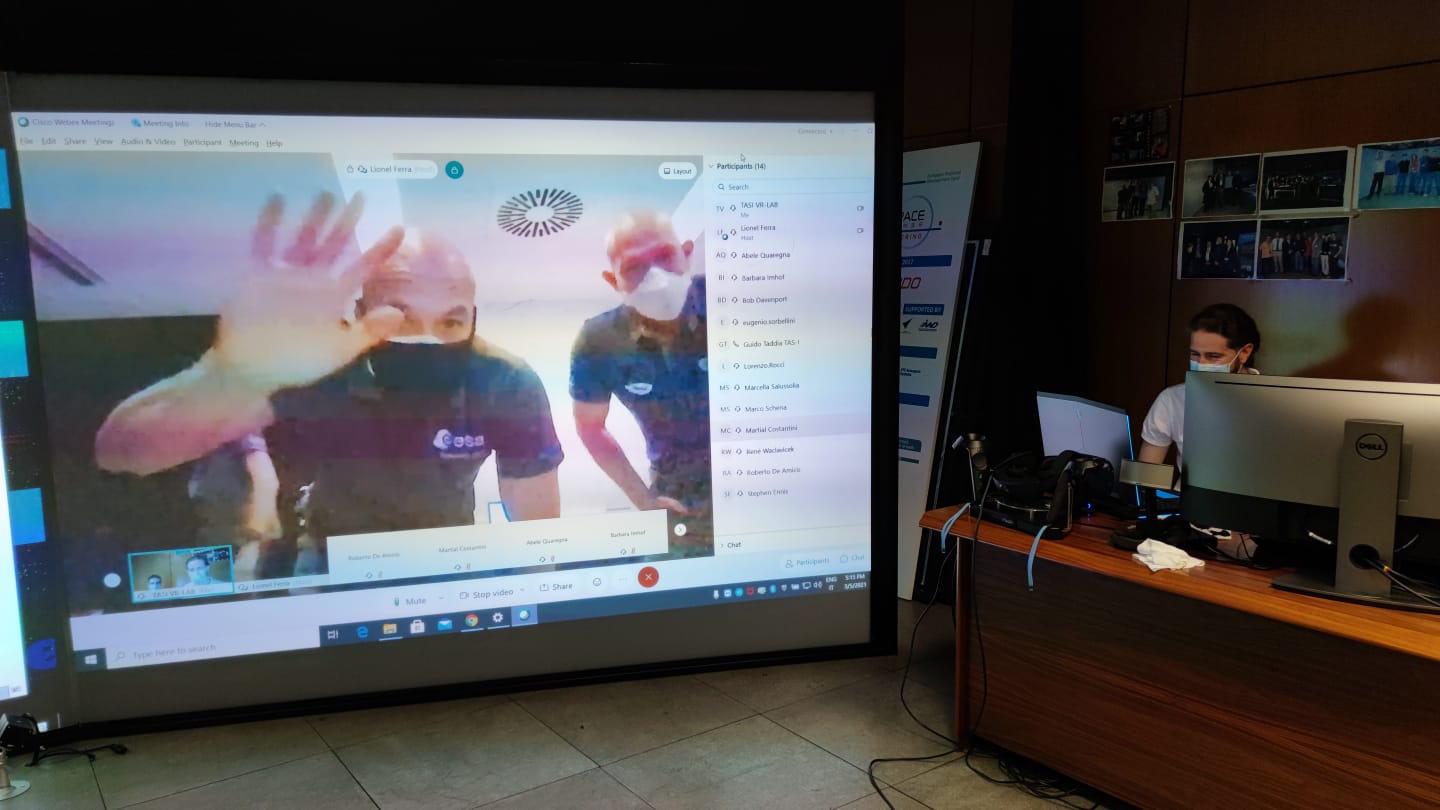ESA astronaut Alexander Gerst and Luca Parmitano donned virtual reality headsets at the European Astronaut Centre last week to help prepare for the Preliminary Design Review of the International Habitat (I-Hab) module for the lunar Gateway. Thales Alenia Space teamed up ESA last week to review the habitat’s space, and who better to help design the future orbital outpost than two commanders of the International Space Station?

Virtual Reality Lab in Turin, Italy, during session. Credits: Thales Alenia Space.
Alexander and Luca worked from the European Astronaut Center in Cologne, Germany with Thales Alenia Space engineers in their Virtual Reality Lab in Turin, Italy. Using the virtural gear, they experienced an immersive environment representing the interior of I-Hab, as if they were present on the lunar Gateway in orbit around the Moon. Their involvement in the module design process allows engineers to capitalise on the astronauts’ experience aboard the International Space Station and their feedback will guide upcoming design phases, to support a user-centered design approach.
The setup alowed for easy collaboration at a distance while adhering to the strict saftey measures in place due to COVID-19.
Thales Alenia Space designed a new application dubbed GATEWAY4U for the occasion, which provides a collaborative virtual environment that lets engineers and astronauts experience I-Hab’s environment during the design phase, with an accurate depiction of the module’s architecture, layout and functions. The application has been in design for a while with ESA astronaut Samantha Cristoforetti conducting a session that reviewed preliminary I-Hab and ESPRIT designs in July 2019.
This is what the Gateway design session looked like for the astronauts in their #VR gear. Great collab @Thales_Alenia_S, lets take the #Gateway International Habitat #ForwardToTheMoon! https://t.co/eDbFru33TC pic.twitter.com/7XzP58fhmw
— Human Spaceflight (@esaspaceflight) March 12, 2021
Marcella Salussolia, Program Manager for I-Hab at Thales Alenia Space, commented: “It has been of great interest to witness the astronauts and Thales Alenia Space’s engineers combined operations inside the digital environment. As astronauts explored the module guided by our team, questions and suggestions popped up in a natural way, resulting in valuable feedback, extremely useful for us in the evolutions of its design. The words of appreciation from Alexander Gerst and Luca Parmitano at the end of the session made the entire team very proud, as it’s our primary scope to encounter and match astronauts needs.”




